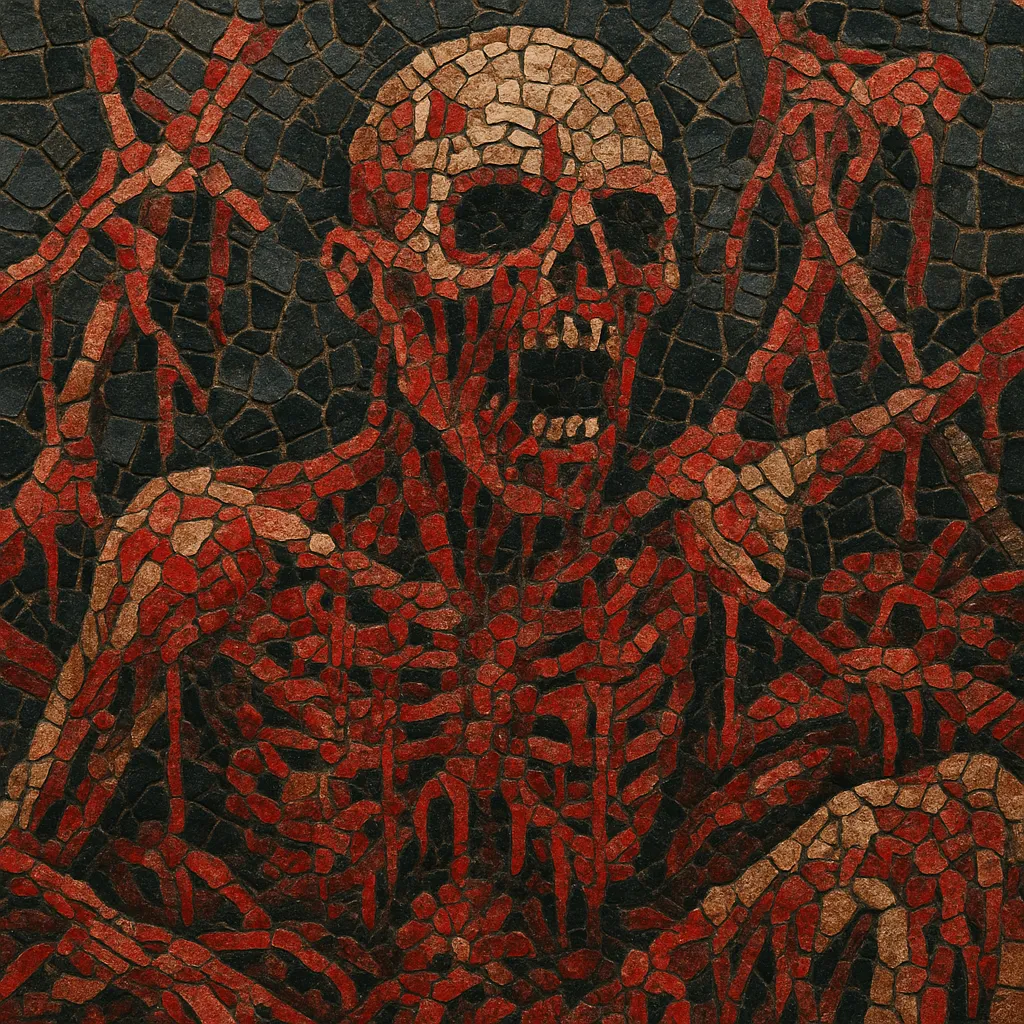
Goregrind is an extreme offshoot of grindcore distinguished by ultra-guttural, often pitch-shifted vocals, relentless blast beats, and brief, abrasive songs that emphasize grotesque, medical, and anatomical themes.
Its guitar tone is typically down-tuned and heavily saturated, with simple, chromatic riffs delivered at very high tempos, while the bass often mirrors the guitars for added weight.
Lyrically and visually, the genre leans into forensic, pathological, and splatter aesthetics, frequently using clinical jargon and shocking artwork as a form of transgressive satire.
Production ranges from deliberately lo-fi, tape-traded rawness to modern, crushing clarity, but the core aesthetic remains claustrophobic, noisy, and visceral.
Goregrind emerged in the United Kingdom in the late 1980s as a visceral, pathology-obsessed offshoot of grindcore. Carcass’s early work, especially Reek of Putrefaction (1988) and Symphonies of Sickness (1989), codified the template: pitch-shifted gurgles, medical-textbook lyrics, and hyper-short, blast-driven songs. The style drew on grindcore’s speed and brevity, death metal’s low tuning and weight, and a noisy, transgressive production ethos.
Through international tape-trading networks, zines, and small labels, goregrind spread rapidly across Europe and beyond. Sweden produced Regurgitate and General Surgery; Poland had Dead Infection; the Netherlands fostered Last Days of Humanity; Spain brought Haemorrhage; and the Czech scene gave Pathologist. DIY labels such as Earache (Carcass), Relapse (Regurgitate, Haemorrhage), Bones Brigade, and Razorback helped document the explosion.
The 2000s saw a surge in both raw and more polished approaches. Bands like Haemorrhage refined the surgical-aesthetic approach, while Last Days of Humanity amplified extremity and noise saturation. In the U.S., Exhumed and Impaled cross-pollinated goregrind with death metal and thrash elements, while maintaining the hallmark grotesque themes.
Goregrind’s lurid, hyper-guttural aesthetic directly inspired pornogrind and the even noisier gorenoise microstyle. Elements also seeped into brutal and slam-oriented death metal scenes. In the streaming era, the style persists via international micro-scenes, bedroom productions, and niche festivals, with its core identifiers—blasts, gurgles, and pathological themes—remaining intact.
Use down-tuned electric guitars (e.g., B standard or lower) with heavy saturation, fuzz, or HM‑2–style chainsaw tones. Pair with a thick, overdriven bass that often doubles the guitar to maximize low-end impact. Drums should prioritize fast blast beats (traditional or gravity blasts), rapid d‑beats, and sudden stop‑start accents.
Write short, chromatic, palm‑muted riffs with tremolo picking and percussive chugs. Alternate between relentless blasts and slower, stomping breaks to create contrast and impact. Keep songs brief—often 30 seconds to 2 minutes—to retain intensity and shock value.
Employ ultra-guttural growls or gurgles, often achieved via pitch-shifting, extreme low fry, or “toilet bowl” resonant techniques. Lyrics should use medical and anatomical terminology, forensic case-report formats, or satirical clinical narratives. Consider using sample-based intros from medical documentaries or hospital ambience to set the mood.
Decide between raw, lo-fi abrasiveness (mimicking tape-traded classics) or a modern, tight production that still preserves density and harshness. Use narrow dynamic range, aggressive EQ in the low-mid region, and controlled clipping/saturation to maintain a claustrophobic wall of sound.
Maintain tight tempo discipline at very high BPMs. Emphasize articulation of blasts and clear transitions between blasts and grooves. Keep arrangements focused and compact; every section should either escalate intensity or deliver a memorable, grotesque hook.

